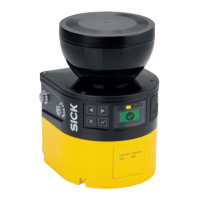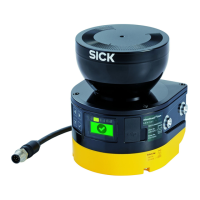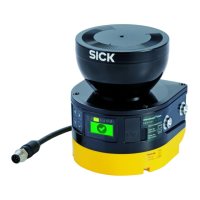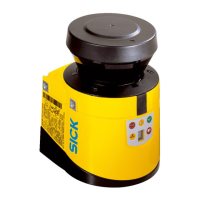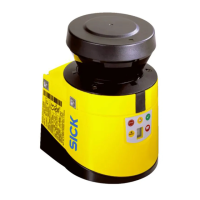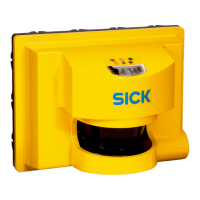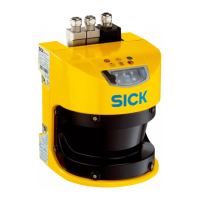4 Data output
4.1 Overview
DANGER
D
anger of using data output for safety function
Data output may only be used for general monitoring and control tasks.
b
Do not use data output for safety-related applications.
Data output allows for the output of measurement data and other data via the Ethernet
int
erface. Other network participants, the receivers, can call up and use the data.
The data output works in different send modes:
•
On request: Data is output when there is an explicit request from a host computer
via TCP/IP using CoLa2
•
Continuous and on request: Data is output continuously via UDP to a defined target
address and also when there is an explicit request from a host computer via
TCP/IP using CoLa2
1)
The device provides the data via channels. Each channel consists of a configured data
output and the receiver defined for it. Currently each device supports a channel (chan‐
nel 0).
You define the angle range that is output for the measurement data in the configuration
of the measurement data output. The device always measures in the entire scanning
angle, but you can limit the output of the measurement data to a smaller sector.
You can define which data the device should output in each channel in the configura‐
tion of the measurement data output. The actually available data depends on the oper‐
ational status of the device, among other things. Therefore not all configured data is
output, rather only the data which is currently available.
After each rotation, the device creates an instance of the measurement data. For con‐
tinuous data output you can also additionally define whether each instance should be
sent or only every nth instance.
4.2 Activating and configuring data output
You can activate and configure the data output in two ways:
•
W
ith the Safety Designer
•
Via the CoLa2 protocol
1)
F
or devices with a max. protective field range of 9.0 m, the transmitted data quantity can be very large (> 230 kByte/s) if all measured
values are transmitted. For stable data output, you can adapt the transmission frequency (e.g. every second measurement) or decrease
the angular range.
4 D
ATA OUTPUT
8
T E C H N I C A L I N F O R M A T I O N | microScan3, outdoorScan3 8022708/2019-04-15 | SICK
Subject to change without notice
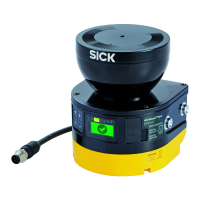
